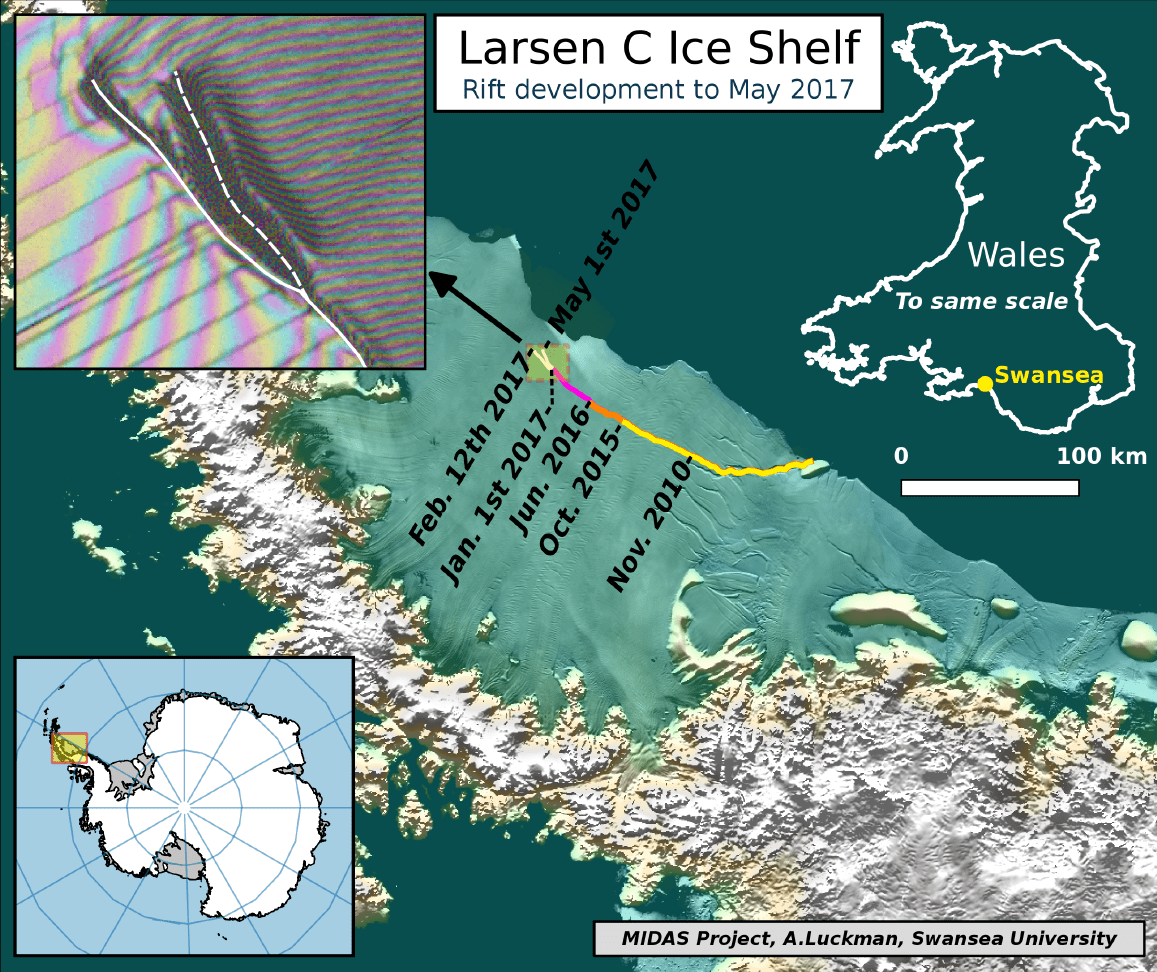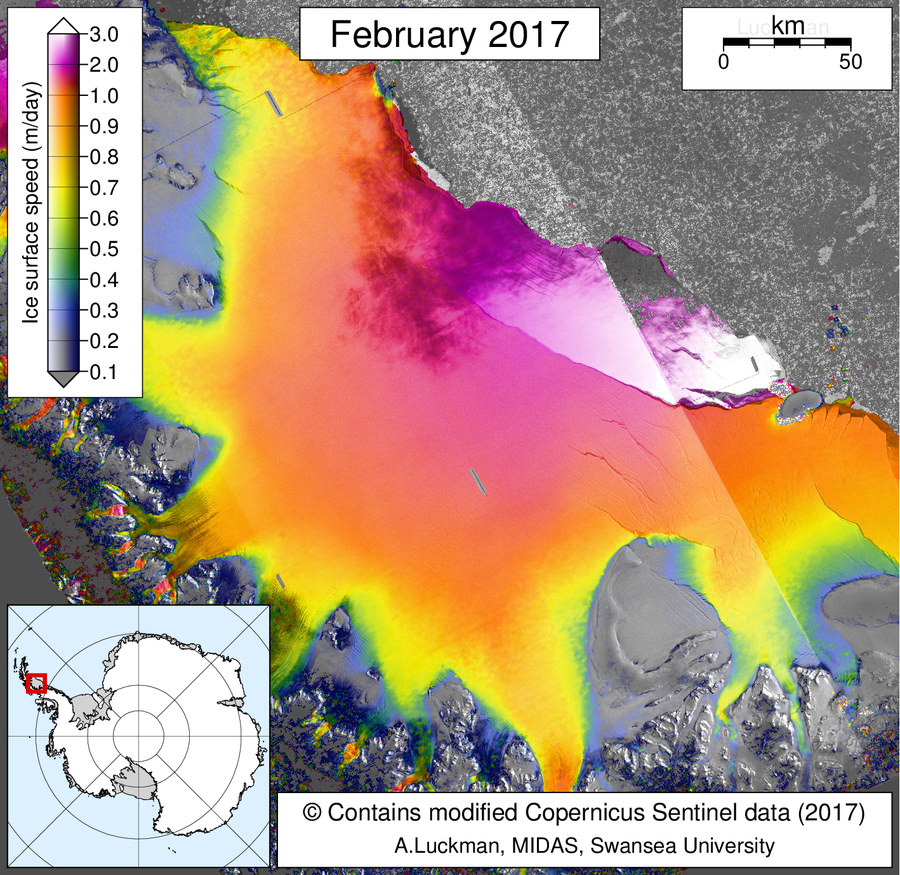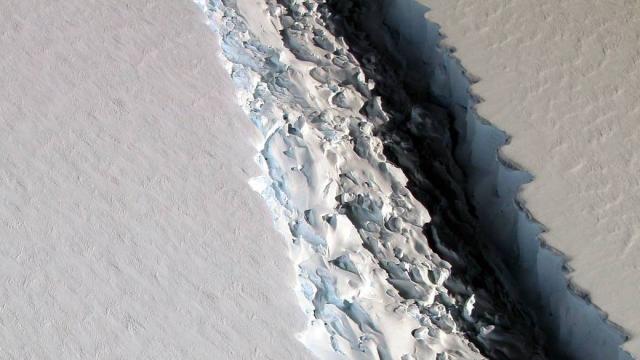A 130km-long crack along Antarctica’s Larsen C Ice Shelf has remained stable since February, but scientists have now detected a new branch, one that’s extending about 10km from the main rift. It seems like only a matter of time before the 5000 square kilometre ice shelf plunges into the sea.
Rift in the Larsen C ice shelf photographed by NASA’s IceBridge aerial survey in November 2016. Image: NASA/John Sonntag
Geologists with Project MIDAS, a UK-based research project studying the effects of melting on the Larsen C ice shelf, have been monitoring the crack for several years now, but the rift experienced a sudden growth spurt this past December when it grew by 20km. In January, the crack advanced another 10km over the course of two weeks. The Larsen C Ice Shelf is fully expected to collapse, or calve, at which time it will lose more than 10 per cent of its ice surface area (a region roughly the size of Delaware). The latest observations suggest this monumental event may happen sooner rather than later.

The current location of the rift on Larsen C, as of 1 May 2017. (Credit: Project MIDAS)
A report from Project MIDAS shows that, as of 1 May 2017, a new branch has appeared along the rift. The fissure emerged about 10km behind the tip of the main channel and is heading towards the ice-front. “This is the first significant change to the rift since February of this year,” write the geologists.
It’s winter in Antarctica, so direct visual observations are hard to come by. Researchers with Project Midas used the synthetic aperture radar (SAR) interferometry instrument aboard ESA’s Sentinel-1 satellites to make the observations.

Ice flow velocities of Larsen C in February 2017 and April/May 2017, from ESA Sentinel-1 data.
The main rift’s length hasn’t changed over the past several months, but it has been steadily widening — sometimes by as much as a metre per day. “This widening has increased noticeably since the development of the new branch, as can be seen in measurements of the ice flow velocity,” write the Project Midas scientists. This would suggest that the integrity of the ice shelf is becoming increasingly unstable.
[referenced url=”https://gizmodo.com.au/2017/02/what-happens-when-that-enormous-antarctic-ice-shelf-finally-breaks/” thumb=”https://i.kinja-img.com/gawker-media/image/upload/t_ku-large/bafjtlolagftyvp9vcow.jpg” title=”What Happens When That Enormous Antarctic Ice Shelf Finally Breaks?” excerpt=”For the past few months, scientists have watched with bated breath as a rift in the Antarctic Peninsula’s Larsen C ice shelf grows longer by the day. Eventually, the rift will make a clean break, expelling a 5000 square km chunk of ice into the sea. It will be an epic sight to behold — but what happens after the ice is gone?”]
The warmer air and water in the region is largely driving the changes to the region’s ice; the main crack now measures about 450m wide. No timetable has been set for the all-but-inevitable calving, which will be one of the largest such events on record, although as we’ve explained before, it won’t contribute to sea level rise directly. But the new fissure shows how quickly the situation is changing, even as winter sets in.
